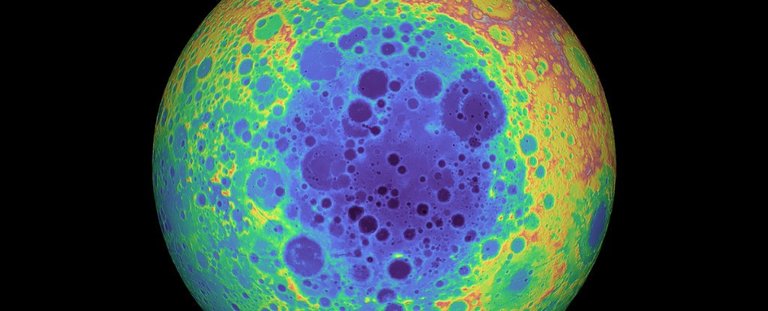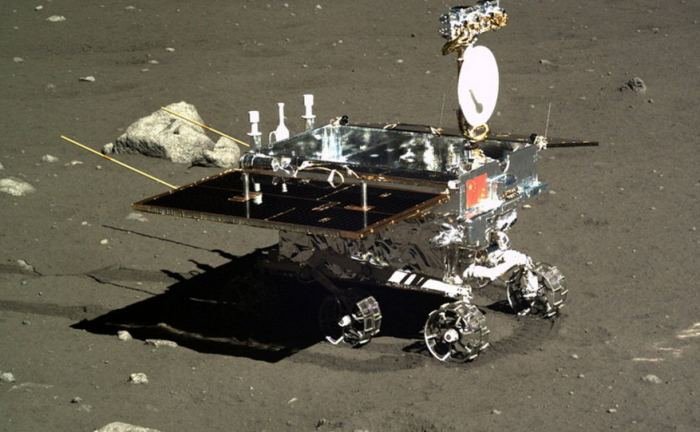
It would be no misrepresentation to state that we live during a time of restored space investigation.
Specifically, the Moon has turned into the point of convergence of expanding consideration as of late. Notwithstanding President Trump's current mandate to NASA to come back to the Moon, numerous other space organizations and private aviation organizations are arranging their own missions to the lunar surface.
A decent illustration is the Chinese Lunar Exploration Program (CLEP), also called the Chang'e Program.

Named to pay tribute to the antiquated Chinese lunar goddess, this program has sent two orbiters and one lander to the Moon as of now. What's more, in the not so distant future, the Chang'e 4 mission will start withdrawing for the furthest side of the Moon, where it will contemplate the nearby geography and test the impacts of lunar gravity on bugs and plants.
The mission will comprise of a transfer orbiter being propelled on board a Long March 5 rocket in June of 2018. This hand-off will expect circle around the Earth-Moon L2 Lagrange Point, trailed by the dispatch of the lander and wanderer around a half year later.
Notwithstanding a propelled suite of instruments for concentrate the lunar surface, the lander will likewise be conveying an aluminum compound holder loaded with seeds and bugs.
As Zhang Yuanxun – boss creator of the holder – told the Chongqing Morning Post (as per China Daily):
"The compartment will send potatoes, arabidopsis seeds and silkworm eggs to the surface of the Moon. The eggs will bring forth into silkworms, which can create carbon dioxide, while the potatoes and seeds emanate oxygen through photosynthesis. Together, they can build up a straightforward biological community on the Moon."
The mission will likewise be the first occasion when that a mission is sent to an unexplored district on the furthest side of the Moon.
This district is none other than the South Pole-Aitken Basin, a tremendous effect locale in the southern half of the globe. Estimating about 2,500 km (1,600 mi) in measurement and 13 kilometer (8.1 mi) profound, it is the single-biggest effect bowl on the Moon and one of the biggest in the Solar System.
This bowl is additionally wellspring of awesome enthusiasm to researchers, and not on account of its size.
As of late, it has been found that the locale likewise contains immense measures of water ice. These are believed to be the consequences of effects by meteors and space rocks which left water ice that survived due to how the district is for all time shadowed.
Without coordinate daylight, water ice in these holes has not been liable to sublimation and compound separation.
Since the 1960s, a few missions have investigated this area from circle, including the Apollo 15, 16 and 17 missions, the Lunar Reconnaissance Orbiter (LRO) and India's Chandrayaan-1 orbiter.
This last mission (which was mounted in 2008) additionally included sending the Moon Impact Probe to the surface to trigger the arrival of material, which was then broke down by the orbiter.
The mission affirmed the nearness of water ice in the Aitken Crater, a disclosure which was affirmed about a year later by NASA's LRO.
On account of this revelation, there have been a few in the space investigation group who have expressed that the South Pole-Aitken Basin would be the perfect area for a lunar base. In this regard, the Chang'e 4 mission is researching the very plausibility of people living and chipping away at the Moon.
Beside disclosing to us more about the nearby landscape, it will likewise survey regardless of whether earthbound life forms can develop and flourish in lunar gravity - which is around 16 percent that of Earths (or 0.1654 g).
Past examinations directed on board the ISS have demonstrated that long haul presentation to microgravity can have extensive wellbeing impacts, yet little is thought about the long haul impacts of lower gravity.
The European Space Agency has likewise been vocal about the likelihood of building an International Lunar Village in the southern polar area by the 2030s.
Characteristic for this is the proposed Lunar Polar Sample Returnmission, a joint exertion between the ESA and Roscosmos that will include sending an automated test to the Moon's South Pole-Aitken Basin by 2020 to recover tests of ice.
Before, NASA has likewise talked about thoughts for building a lunar base in the southern polar district.
In 2014, NASA researchers met with Harvard geneticist George Church, Peter Diamandis (maker of the X Prize Foundation) and different gatherings to talk about minimal effort choices.
As indicated by the papers that came about because of the gathering, this base would exist at one of the shafts and would be displayed on the US Antarctic Station at the South Pole.
In the event that all goes well for the Chang'e 4 mission, China plans to line it up with more automated missions, and an endeavored maintained mission in around 15 years. There has likewise been discussion about including a radio telescope as a major aspect of the mission.
This RF instrument would be sent to the most distant side of the Moon where it would be undistributed by radio signs originating from Earth (which is a typical cerebral pain with regards to radio space science).
Also, contingent upon what the mission can inform us regarding the South Pole-Aitken Basin (i.e. regardless of whether the water ice is copious and the radiation mediocre), it is conceivable that space offices will send more missions there in the coming years.
Some of them may even be conveying robots and building materials!
Additionally Reading: Sputnik News, Planetary Society
This article was initially distributed by Universe Today. Read the first article.
Live on Moon & on Mars, are the next big things
As pollution & population has covered up all lovable places on Earth, we will soon need them